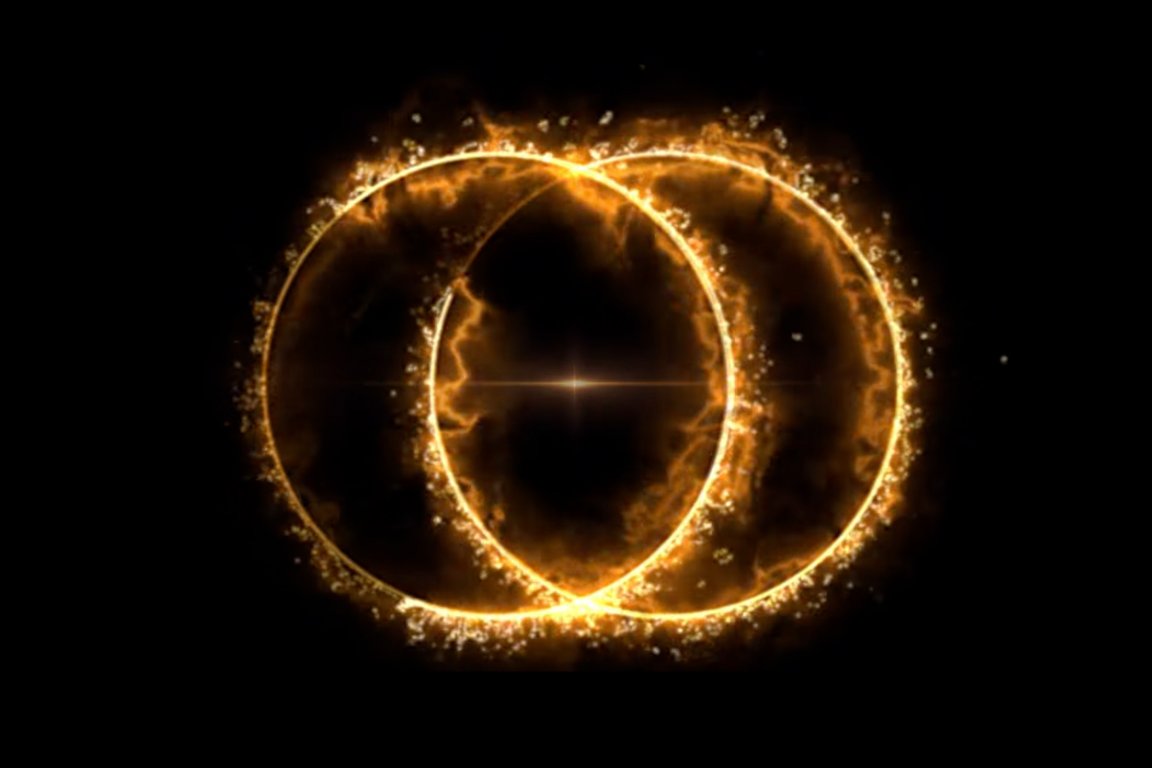
Looming billions of light years away, astronomers have spotted an enormous double-ring structure — itself hundreds of thousands of light years across — that glows spectacularly in radio wavelengths. And, tantalizingly, they can’t fully explain its origins.
The discovery, documented in a new study published in the Monthly Notices of the Royal Astronomical Society, is the latest example of a class of enigmatic cosmic objects called Odd Radio Circles, of which only a handful have ever been found since they were first discovered just six years ago. And it’s only the second found to comprise two rings.
ORCs are believed to be made up of magnetized plasma. Distinguishable only in radio light, they’re found encircling a galaxy at their center, and are often dozens of times the diameter of the entire Milky Way. Yet, despite their unignorable scale, we still don’t know what causes them to form, intriguing astronomers who believe that they could be echoes of catastrophes that shook the cosmos billions of years ago.
“ORCs are among the most bizarre and beautiful cosmic structures we’ve ever seen — and they may hold vital clues about how galaxies and black holes co-evolve, hand-in-hand,” study lead author Ananda Hota, an assistant professor at the University of Mumbai’s department of atomic energy’s Centre for Excellence in Basic Sciences, told CNN.
This latest ORC, referred to by the name of the galaxy it was found in, RAD J131346.9+500320, may provide major clues. Residing some 7.5 billion light years from Earth, the double-ringed ORC sits in a packed area of space called a galaxy cluster, formed from multiple galaxies that are gravitationally bound to each other and are all in relatively close proximity.
This suggests that the ORCs might be shaped by interactions between surrounding plasma and a galaxy’s jet, a highly energetic stream of particles produced by a supermassive black hole that occupies the center of a galaxy. In such a scenario, the black hole jet created the magnetized clouds of plasma, which were later blasted by some enormous explosion near the galactic center. That re-energized the plasma clouds, Hota told CNN, making them glow anew as radio rings.
“These discoveries show that ORCs and radio rings are not isolated curiosities — they are part of a broader family of exotic plasma structures shaped by black hole jets, winds, and their environments,” said coauthor Pratik Dabhade, assistant professor in the astrophysics division of the National Centre For Nuclear Research in Warsaw, Poland, in a statement.
The ORCs are part of what astronomers are calling an entire “low-surface brightness universe” of objects that were once hidden from view that are now being uncovered by the latest generation of powerful radio telescopes. Some other discoveries found lurking in this secret realm include a supernova remnant so perfectly round that it defies explanation, and moribund stellar objects called Wolf-Rayet stars that burn and shine so intensely that they only survive for a cosmic blink of the eye.
More on astrophysics: Scientists Intrigued by Black Hole That Fell Into Star, Then Ate It From the Inside